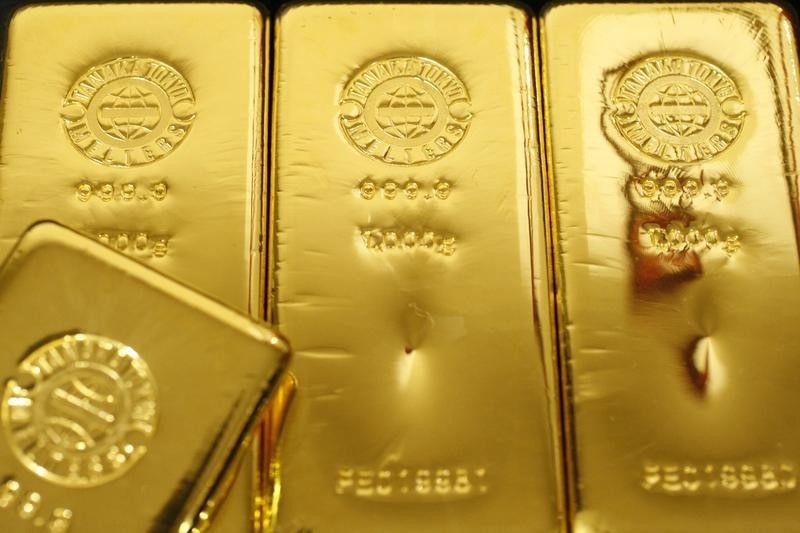Investing.com - Gold prices were on track to post their fourth consecutive losing session on Tuesday, as investors continued to cut holdings of the precious metal amid expectations the Federal Reserve will raise interest rates at its next meeting in December.
Gold for December delivery on the Comex division of the New York Mercantile Exchange tumbled $11.30, or 0.99%, to trade at $1,124.60 a troy ounce during U.S. morning hours. It earlier fell to $1,124.20, the lowest since October 2.
A day earlier, gold prices declined $5.50, or 0.48%. Futures are down almost 4.5% in the past four sessions, including today.
Gold had rallied in October as concerns over a global economic slowdown led by China and its impact on U.S. growth prospects had prompted market participants to push back expectations for a rate increase to March 2016.
But the Fed's hawkish statement last week forced market players to readjust expectations for higher interest rates to as early as December, triggering a sell-off in the bullion market.
Expectations of higher borrowing rates going forward is considered bearish for gold, as the precious metal struggles to compete with yield-bearing assets when rates are on the rise.
Market players are looking ahead to Friday's U.S. nonfarm payrolls report for further clarity on the likelihood of a near-term interest rate hike.
The consensus forecast is that the data will show jobs growth of 182,000 in October, following an increase of 142,000 in September, while the unemployment rate is forecast to hold steady at 5.1%.
A strong U.S. nonfarm payrolls report was likely to add to speculation over when the Federal Reserve will begin to raise interest rates, while a weak number could undermine the argument for an early rate hike.
Elsewhere in metals trading, copper for December delivery on the Comex division of the New York Mercantile Exchange dipped 1.1 cents, or 0.46%, to trade at $2.308 a pound during morning hours in New York.
Copper prices have been under pressure in recent sessions as persistent worries about future demand from top consumer China weighed.
The Asian nation is the world’s largest copper consumer, accounting for almost 40% of world consumption last year.
